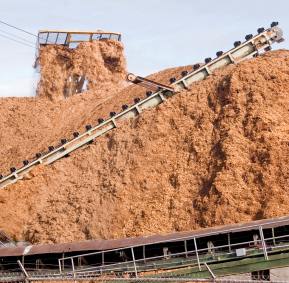|
Top 3 Stories from the December Issue
|
|
|
 | ECONOMIC OUTLOOK: 2011-2012 | 
Positive economic signs graced the holidays; retailers saw record holiday spending, fewer unemployment claims were filed, and the Tax Relief, Unemployment Insurance Reauthorization, and Job Creation Act of 2010 was signed into law on December 17. The new tax law will add some stability to the economy, as tax rates are now set for the next two years at 2010 levels. New tax breaks for businesses and individuals were included in the bill as well. We've also had a good run in the stock market, which--as of December 29--had returned the Dow Jones Industrial Average (DJIA) to August 2008 levels.
We certainly hope that these signs of economic recovery are sustained throughout 2011. Unfortunately, when we plug the numbers into our econometric models, the results show that the improvements may be short lived.
|
 | INDUSTRY AT A GLANCE
From Forest2Market's Economic Outlook | |
The final manufacturing statistics are in for October. New orders, the forward-looking portion of the Census Bureau's report on shipments, inventories and orders provided little in the way of encouragement for manufacturing. New orders decreased $3.4 billion (0.9 percent) to $420.3 billion in October. Excluding transportation, new orders decreased 0.2 percent. Orders for durable goods decreased 3.4 percent (led lower by transportation equipment) while nondurable goods orders increased 1.5 percent billion.
"I don't think we're in for a prolonged downtrend in new orders but this [report] is a reflection of the weakness we saw in demand over the summer," Scott Anderson, a senior economist at Wells Fargo Securities Inc. in Minneapolis, said. "We had a buildup of inventories over the summer and that's having a consequence."
|
 | HOUSING MARKET UPDATE | 
2010 left its mark on wood and building products markets, with the worst home sales in more than a decade, high unemployment, record foreclosure levels, and tightened credit requirements. Confidence among consumers, producers and lenders remained low.
In 2011, concerns about market conditions will continue. One of the concerns will be a double-dip in home sales prices. The most recent numbers from the S&P/Case-Shiller Home Price Index, which tracks real estate value changes both nationally and in the 20 largest U.S. metropolitan areas with a two-month lag time, were the lowest in over a year. Economists and industry experts are predicting another 7-8 percent decline in home sales prices in the first half of 2011 before prices stabilize in the second half of the year.
|
 | BIOMASS CROP ASSISTANCE PROGRAM | 
On December 15, the United States Department of Agriculture (USDA) released all the documents necessary to kick off the implementation of the Biomass Crop Assistance Program. Biomass conversion facilities can now apply for qualifying status. As of December 30, only one facility had been qualified--a facility in Iowa run by Poet that converts corn cobs into cellulosic ethanol. This number is likely to increase quickly in the new year.
Suppliers for many wood products and pulp and paper cogeneration facilities will no longer qualify for payments. Under the new rules, all wood fuel not separated from higher value products at the harvest site are now ineligible, as are materials for which there is already a market--most mill residues, for instance.
|
 | SOFTWOOD LUMBER CHECK-OFF PROGRAM | |
Over the last two decades, the softwood lumber market in the U.S. has been experiencing a gradual erosion of market share. This has been true even in years like 2005, when sales were solid. The current state of the housing market has exacerbated the problem. In addition, the steel and concrete industries have undertaken well-funded and aggressive marketing campaigns, at times turning the lumber and building products (LBM) industry's environmental messaging against it. Until the last two years, the industry's response has been fragmented.
In an effort to strengthen the industry and reverse the trend of market share erosion, the Binational Softwood Lumber Council determined that a check-off program would benefit of the industry and developed provisions and rules for the program with industry input. An industry referendum on the program will be held before mid-year 2011--probably in April.
|
 | BOILER MACT RULE DELAYED | 
The Environmental Protection Agency's (EPA) new Boiler Maximum Achievable Control Technology (MACT) Rule, which according to a study commissioned by the American Forest & Paper Association could lead to a loss of 17,000 pulp and paper jobs and create a ripple effect through local economies, has been postponed.
The EPA recently requested an extension for implementing the proposed Boiler MACT Rule, which was scheduled to go into effect on January 16, 2011. The EPA asked for the 15-month extension so that it could reconsider the rule based on comments and additional data it received that "raise questions about the agency's initial conclusions." Gina McCarthy, the EPA's assistant administrator for air and radiation, said that some of the pollution limits "were simply too tight to...be achievable."
|
|
|
|
|